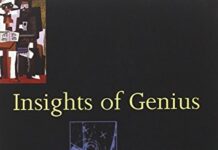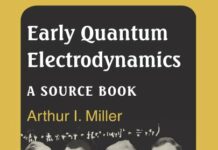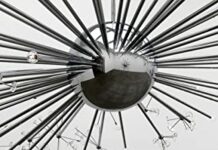
Ebook Info
- Published: 2010
- Number of pages: 370 pages
- Format: PDF
- File Size: 4.79 MB
- Authors: Arthur I. Miller
Description
“The history is fascinating, as are the insights into the personalities of these great thinkers.”―New Scientist Is there a number at the root of the universe? A primal number that everything in the world hinges on? This question exercised many great minds of the twentieth century, among them the groundbreaking physicist Wolfgang Pauli and the famous psychoanalyst Carl Jung. Their obsession with the power of certain numbers―including 137, which describes the atom’s fine-structure constant and has great Kabbalistic significance―led them to develop an unlikely friendship and to embark on a joint mystical quest reaching deep into medieval alchemy, dream interpretation, and the Chinese Book of Changes. 137 explores the profound intersection of modern science with the occult, but above all it is the tale of an extraordinary, fruitful friendship between two of the greatest thinkers of our times. Originally published in hardcover as Deciphering the Cosmic Number. 66 b/w illustrations
User’s Reviews
Editorial Reviews: About the Author Arthur I. Miller is a professor emeritus at University College London. He has published many critically acclaimed books, including Einstein, Picasso; Empire of the Stars; and 137. He lives in London.
Reviews from Amazon users which were colected at the time this book was published on the website:
⭐A “cosmic number” that is tantamount to the skeleton key of the universe is among the most intoxicating of notions. In “Deciphering the Cosmic Number: The Strange Friendship of Wolfgang Pauli and Carl Jung,” Arthur I. Miller tells the story of two unlikely associates and their quest for just such a number (and its relationship to the fine structure constant). Along the way we learn intimate details about the great physicists of an extremely fertile period that gave us such things as relativity, the photoelectric effect, the uncertainty principle, quantum physics, the atom bomb, and many others. We also learn more about the personal life of Wolfgang Pauli and Carl Jung, as well as some interesting tidbits about Sigmund Freud, plus new insights into the minds of Johannes Kepler and Robert Fludd.The book reminds us that a mixture of the humanities and hard science through mysticism and mathematics, (or depth psychology and physics) can broaden the search patterns of the mind – increasing the sheer number of algorithmic links in the circuitry of the brain that might be activated by the spread. You might even say that Jung and Pauli were browsing through everything they knew together in hopes of enhancing their understanding of their own respective fields of endeavor.Pauli’s interest in Jung was fueled by his fascination with the theory of the archetypes and how they could enable a man like him to “get the girl.” Pauli’s personal life had become a shambles and when he read Jung’s description of the “introverted-thinking type” he was stunned by the “uncannily precise” resemblance to his own personality, which soon caused him to actively seek Jung’s counsel. Over time, as they became closer associates, Jung benefited from Pauli’s mathematical prowess as well as his insider’s knowledge of the wild frontier of theoretical physics and its tightly knit community of advanced thinkers.It was a synergetic relationship. Jung’s concept of the opposite psychological types (introvert/extrovert) was remarkably similar to Niels Bohr’s concept of “complementarity,” which, when viewed with respect to the tension between the opposites within the physical universe (the quantum jumpiness that exists between particle and wave, position and momentum) raised a number of interesting questions.”Synchronicity” was one of them. Synchronicity, simultaneity, complimentarity: all were used interchangeably by Pauli and Jung at various times, albeit each concept has a specific meaning and application which would take us far afield if we were to discuss their particulars at length. But synchronicity became Jung’s word of choice for one of his most profound definitions, and it is doubtful that he could have conceived of it in the way that he did had it not been for his friendship with Pauli.The study of Kabbalah, alchemy, the Book of Changes (the “I Ching”) as well as the arcane symbolism of magic in tandem with hard science and mathematics enabled both Pauli and Jung to plumb the depths of their creativity, stretching their minds beyond the over-specializations of their narrow career paths and narcissist egos.But the central theme of the book is that there is a “cosmic number” and what it may signify. I swallowed the whole idea of the mystical number, hook, line, and sinker until I saw Darren Aronofsky’s “Pi.” After viewing his thought provoking film several times I was even unable to write a review of this book. There is no question that numbers (and number patterns) describe the texture of reality with sparkling clarity and in a language that is universal, as well as beautiful (among mathematicians). But deep “Cartesian doubt” was implanted in my mind by the argument between the main character, Max, and his older, wiser friend, Sol, as they discussed “scientific rigor” versus “numerology.” The same could be said for the conversation in the movie between the rabbi Cohen and Max as to the existence of the Holy Name of God and some magic number (with 216 digits) that might reveal the now-forgotten sound of it. As for the stock market, let’s just say that human psychology appears to render it unpredictable, chaotic, and indecipherable by number alone.Still, the quest for the cosmic number that is so well told in this book should not be denigrated by Cartesian doubt. The search alone is the great adventure, and from Stonehenge to the Hubble telescope we have never stopped looking for that elusive skeleton key that will unlock our destiny.One last thing though; in
⭐Lee Smolen stated that no new laws of physics have been discovered in the last 25 years. This astounded me when I first read it, and many of my speculations since then have been influenced by the implications of this observation. However, after reading Clifford Pickover’s
⭐I was reminded once again that many of the greatest lawmakers of science studied magic, religion, poetry, art, even music, and then combined it with scientifically rigorous and ruthlessly logical (or empirical) method. In the end, such things have a way of extending the swath of the hypothetical searchlight and often ignite the intuitive genius of an Isaac Newton or an Albert Einstein. After all, the universe is curved, not straight.
⭐Arthur I. Miller addresses the foundational problem of the fine-structure constant (the “Cosmic Number”) and the historical, biographical background entailed in the search for a solution to this mostly unsolved problem. The main title is only symbolic of the goal toward which Pauli and Jung were searching: the Philosopher’s Stone, or Quintessence of alchemy, the attainment of an enlightened and individuated psyche. The “Cosmic Number” is symbolic of a vital archetypal process in nature, and the physical meaning as giving the strength of the electromagnetic interaction is only part of the problem that concerned Pauli in particular. What Pauli called his “background physics” was a catalyst for linking sense perceptions with creative concepts, and 137 was the “archetypal number” for this. So not only is the fine-structure constant a dimensionless number of fundamental importance in physics, it is of key symbolic significance to Jung’s depth psychology and the history of alchemy.In his study of the archetypal ideas of Johannes Kepler and Robert Fludd from the 17th century, Pauli traced the line of their research back to Pythagoras. While Plato is only briefly mentioned in this book, significant and remarkable parallels are to be found between the geometry of Plato’s ideal City of Magnesia and Wolfgang Pauli’s dream, “the great vision – of the World Clock”. According to John Michell the ideal City of Magnesia is a form of the Cosmological Circle from ancient geometry. “By Plato’s time, the very idea of a canon of music had been forgotten everywhere except in the academies of Egypt, but he himself had evidently studied and learned it, for the number code behind it is at the root of all his mathematical allegories and provided the scientific basis of his philosophy.” (Dimensions of Paradise, p.9) and “The universe, human nature, and the mind of the Creator were made commensurable by number, which Plato called the ‘bond’ holding all things together.” (p.230).The fine-structure constant was introduced into physics by Arnold Sommerfeld, Pauli’s professor and mentor, and being captivated by the mystery of spectral lines of the atom he said, “What we are nowadays hearing of the language of the spectra is a true music of the spheres within the atom, chords of integral relationships, an order and harmony that becomes even more perfect in spite of manifold variety.”(p.64). Pauli’s contributions to modern physics include the Pauli exclusion principle for electrons in the atomic orbit, the theoretical prediction of the neutrino particle, the fourth quantum number related to spin, CPT symmetry related to “mirror reflections,” the legendary “Pauli effect,” and his exit from the world stage from room number 137. Pauli also helped Jung to develop his theory of synchronicity, or acausal connecting principle related to meaningful events. Miller quotes Max Born on p.253: “If alpha (the fine structure constant) were bigger than it really is, we should not be able to distinguish matter from ether (the vacuum, nothingness), and our task to disentangle the natural laws would be hopelessly difficult. The fact however that alpha has just its value 1/137 is certainly no chance but itself a law of nature. It is clear that the explanation of this number must be the central problem of natural philosophy.” Pauli concluded that “most modern physics lends itself to the symbolic representation of psychic processes.” (p.162). Readers of Carl Jung may find this book more interesting than Pauli fans, as it is more biographical and “Jungian” in content.Sherbon, M.A. “Fine-Structure Constant from Golden Ratio Geometry,” International Journal of Mathematics and Physical Sciences Research, 5, 2, 89-100 (2018). Shown in the attached image is a calculation of α the fine-structure constant, φ is the Golden Ratio, A is the Golden Apex of the Great Pyramid and K is the polygon circumscribing constant. 2016 CODATA UPDATE: 137.035 999 160 (33).https://quintessentia.wordpress.com/2018/01/31/fine-structure-constant-from-golden-ratio-geometry/
⭐Great information for someone determined to explore this area of physics/early western psychology. Thumbs up.
⭐ver la tremenda imaginacion y obsesion de dos personajes tremendamente cultos para poder encontrar explicaciones en temas oscuros. Captar como la razon esta sobrevalorada en el mundo moderno y que no tiene respuestas para muchas cosas que ocurren en el mundo exterior e interior de cada uno.
⭐
⭐A.I. Miller throws a new light on the relationship between W.Pauli and C. Jung and describes in a magistral way how, what was at the beginning a professional consultation of Jung by Pauli ,evolves into a cooperation each influencing each other into its own territory until they actually fused through some kind of alchemic process,described at its best in the chapter on Synchronicity. One however – at least myself- remains unsatisfied as Pauli personality and his work on quantum mechanics-which does require some familiarity with the subject- seems to invade the story a little bit at the expense of Jung contribution.At the end these two out -of -the box thinkers did revolutionize the world and it would be fascinating to go further in exploring how the mingling of science and unconsciousness have been at the source of such creativity. In that regard the book is definetely more than the story of a relationship.
⭐A fascinating study of the meeting of two men of genius, the cross fertilisation of Einstein’s star Nobel physicist and Jung the psychologist, with groundbreaking research into the basic link between physics and psychology. Not always easy reading, but en elegant exploration by Miller of remarkable minds whose work has yet to find its place in scientific thought.
⭐Anyone interested in the interface of physics and psychology should find rich pickings in this book. While primarily biographical, it grapples with equations and scientific theory that still make the arguments in the text accessible to non-specialists. Occasionally the prose can be rambling, but I very much enjoyed this book: the author is clearly passionate about shedding light on the creative process and the role of intuition in highly abstract processes.
⭐True, Wolgang Pauli was really taken with 137. This wonderful book is really helpful in understanding why.
⭐A readable and thought-provoking account of the interaction between a pioneering psychiatrist and a brilliant scientist.
⭐incredible history
Keywords
Free Download 137: Jung, Pauli, and the Pursuit of a Scientific Obsession in PDF format
137: Jung, Pauli, and the Pursuit of a Scientific Obsession PDF Free Download
Download 137: Jung, Pauli, and the Pursuit of a Scientific Obsession 2010 PDF Free
137: Jung, Pauli, and the Pursuit of a Scientific Obsession 2010 PDF Free Download
Download 137: Jung, Pauli, and the Pursuit of a Scientific Obsession PDF
Free Download Ebook 137: Jung, Pauli, and the Pursuit of a Scientific Obsession




